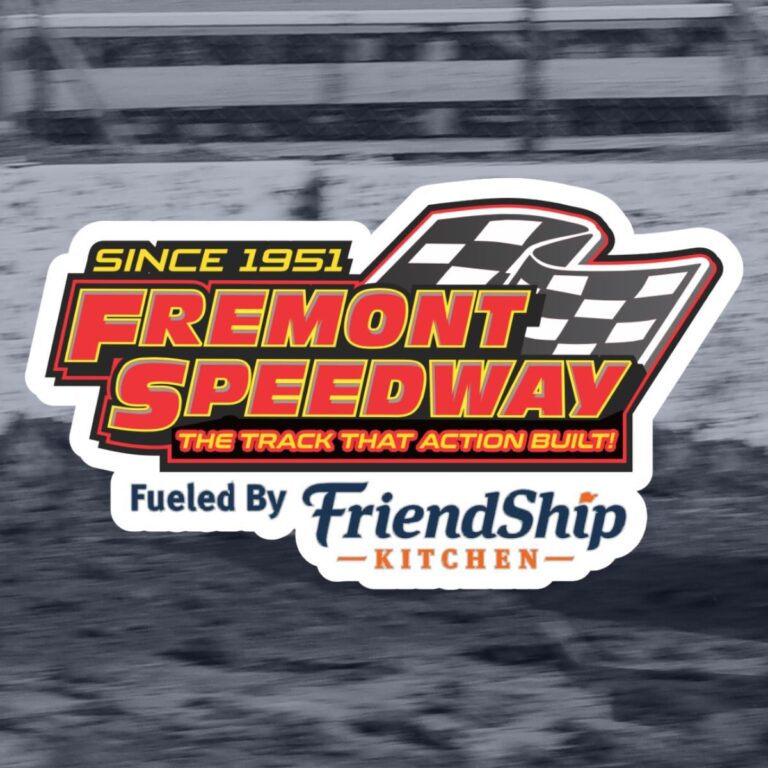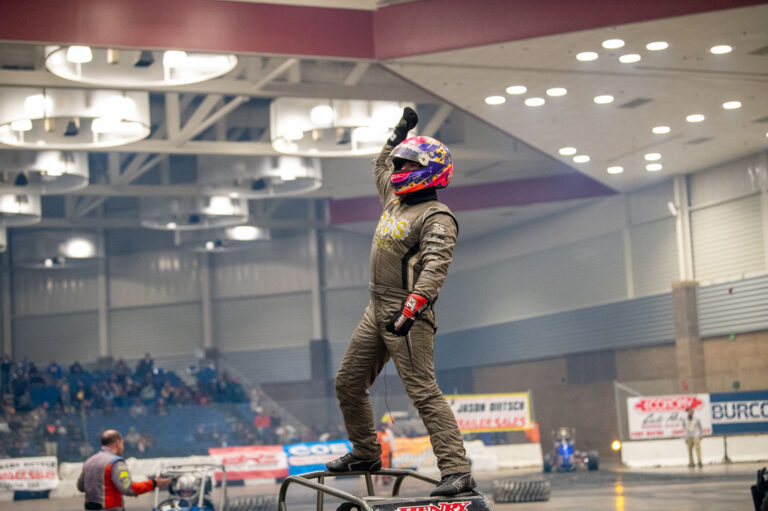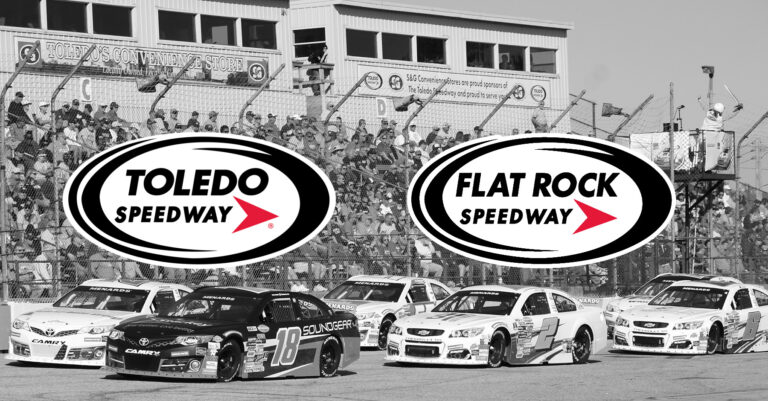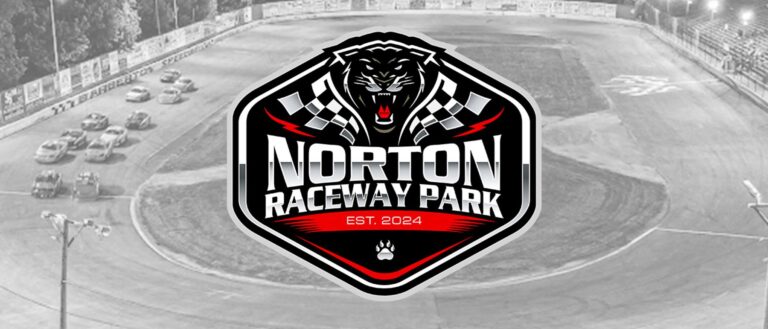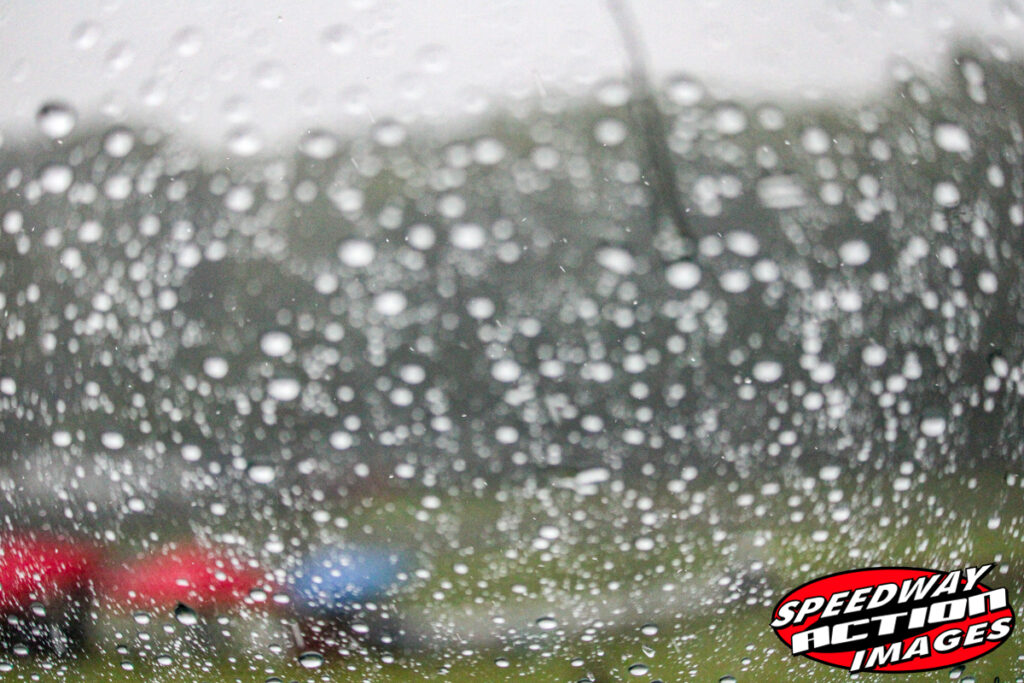
It’s one of the things that keeps promoters up at night. The weather forecast calls for rain on race day, and it gets worse as the week goes on. With today’s technology and mobile devices we have weather on demand right at our fingertips. Depending on the app the weather forecasts vary, some say it will almost certainly rain, others call for a sunny day. Then there’s the local news channels and their “specially trained: meteorologists who know the weather in our area “better than anyone”. You have the First Alert Forecast, Severe Weather Central and when Jim Cantore from the Weather Channel shows up you know it’s going to be bad.
How does a bad weather forecast affect the local race track? Well, for the area road courses (Mid Ohio and Nelson’s Ledges) the racing goes on unless there is lightning or severe weather in the area. Local short tracks cannot race in the rain, throw in at least an hour of track drying time and even a brief rain shower can delay the program by several hours. We all know what happens when it rains at a racetrack but what about when the forecast calls for rain and it never comes? How does a promoter come to the determination to cancel or postpone an event or push ahead and try to get the races in before the rain hits.
Nothing is worse than getting to the track, paying the admission fee and the skies open up, canceling the races before a car even hits the track. A close second is getting unloaded (or finding your seat) and having a downpour soak your clothes, your racecar and all of your gear. Trust me when I say rain delays at NASCAR races are no fun (we’ve dealt with them the past two years at Michigan International Speedway), especially when you are parked nearly a ¾ miles away from your seat.
There are several factors that come into play; where the teams are traveling from, how many fans will show up with a chance of rain and overhead costs. To further complicate matters some races have TV coverage or streaming partners while others simply have teams traveling hundreds of miles to compete. To better understand the processes, we reached out to several promoters at local short tracks to hear what they consider and how they make the determination to cancel early or press on with the racing activities.
Lorain Raceway Park and The Painesville Speedway promoter Randy Maggio, Jr. has been through his fair share of rain outs, postponements and races that barely got in before the rain came. We asked Randy what goes into his raceday decision to rain out or go on with the racing program. Heres what he says goes into making that decision: “It’s a rough deal all around. For my family and I, we’re race fans. We want to race. Our hearts want to race. So we have financially suffered in years past due to getting the show in. We have a phenomenal crew that when we have our minds set on getting a show in, we try everything in our power to do so. If we do, some may say it’s a success. But the big question and something I have learned in recent years is, if the day is a financial loser, is it truly a success?” said Maggio.
“Race tracks have plenty of overhead we have to think about. Insurance, huge light bills, driver payout, etc etc. The average race fan sees a questionable weather forecast on Wednesday and already starts planning something else. That’s what truly hurts us. Even if the forecast changes for the better. That average fan has other plans and at the end of the day, those average fans is what puts us in the green for the weekend” Maggio said.
Midvale Speedway’s Kim and Randy Smart purchased the 3/10 mile track near New Philadelphia in 2023 and have quickly acclimated to being short track promoters. Kim shared with us what goes into making the call to race or rain out. “A lot of stress goes into making those dreadful calls” Smart said. “We look at multiple different weather apps & what event we are having. We also discuss with a few members of the staff, get their opinions and make the best decision that we possibly can. We take into consideration everyone’s travel time, whether or not it’s possible to get the show in & one of the most important pieces is whether or not the fans will show up.”
Sandusky Speedway is now in the hands of a second generation race track promoter in Kevin Jaycox, Jr. who took the reins of the half mile from his father, Kevin, just a few years ago. Kevin says it depends on “What you’re running and where teams are coming from – I’ve been a driver that has driven 14 plus hours just to get rained out an hour away. That hurts especially if you’re a team on a budget. Sometimes it’s better to be the a**hole that didn’t cost anyone money rather than the a**hole who cost everyone money just to leave the cars in the trailer. Especially if you don’t have a rain date on the same weekend”. “If it’s just a weekly show that’s a little different since most of your drivers and fans are coming from your local area, they can normally hold off and still make it if the weather looks bad early but clears up so it’s easier to wait those shows out” Jaycox, Jr continued. “Also, depending on the event. Like I’m 99.99999999% sure we will never call a Hy-Miler Nationals early. To me and a lot of fans, Hy-Miler is more of a holiday than a race week, and you can’t just go calling a holiday early”.
It’s not only the promoters that have to make a tough decision, for some drivers and teams traveling to the track only to get rained out is expensive. Hauling a racecar to the track with $4/gallon Diesel fuel is just the beginning, there’s the time invested in loading the racecar, food for the crew, pit passes and various other expenses. It can cost upwards of $200 just to leave the shop. There’s money that gets tied up in rain checks (very few tracks offer a refund policy), entry fees, tires and fuel and that doesn’t even begin to go in-depth with maintenance for the racecar. Some teams still haul to the track on an open trailer, leaving the racecar and all the tools exposed to the rain. That creates even more risk.
Sawyer Stout competes in both Outlaw 350 Supermodifieds and Must See Lights, traveling all over Ohio and the region from Indiana and Michigan to New York and Pennsylvania, he shared his thoughts on what his family owned team does when the forecast is unfavorable. “Ever since we started racing the traveling series’ we’ve never really had the decision to stay home. But the main thought is how far is the racetrack and what time will we get home. Also will there be a rain date the next day?”
Kurt Hennings, who travels around the local track with his modified on an open trailer shared his process “I load up the night before if they don’t call a rain out I show up” Hennings told us. “I trust the track’s call on the weather, many times I’ve left home in Cleveland and it was pouring rain only to get to the track and it’s dry, so I usually head to the track, I’ll cover up the car and show up” “Back in the day, when I was running for points, I couldn’t afford not to show up and then they ran so I just go into doing things that way (heading the track unless it’s been rained out). I always want to race and support the track, sometimes that means heading out even with questionable weather” Hennings continued.
It may not be an exact science (just like weather forecasting) but the common theme is keeping an eye to the sky and taking a good guess on if the weather will hold out or not. Nobody likes rain outs, that’s the only certain thing about it.
Discover more from Speedway Action Magazine
Subscribe to get the latest posts sent to your email.

